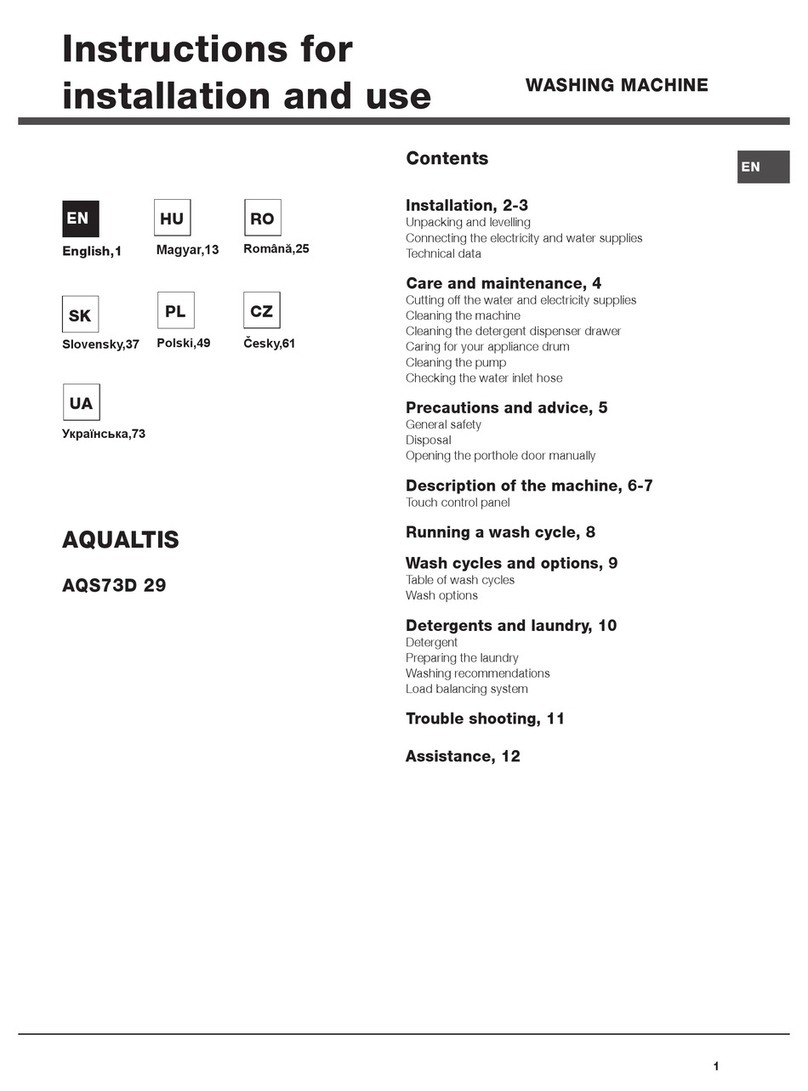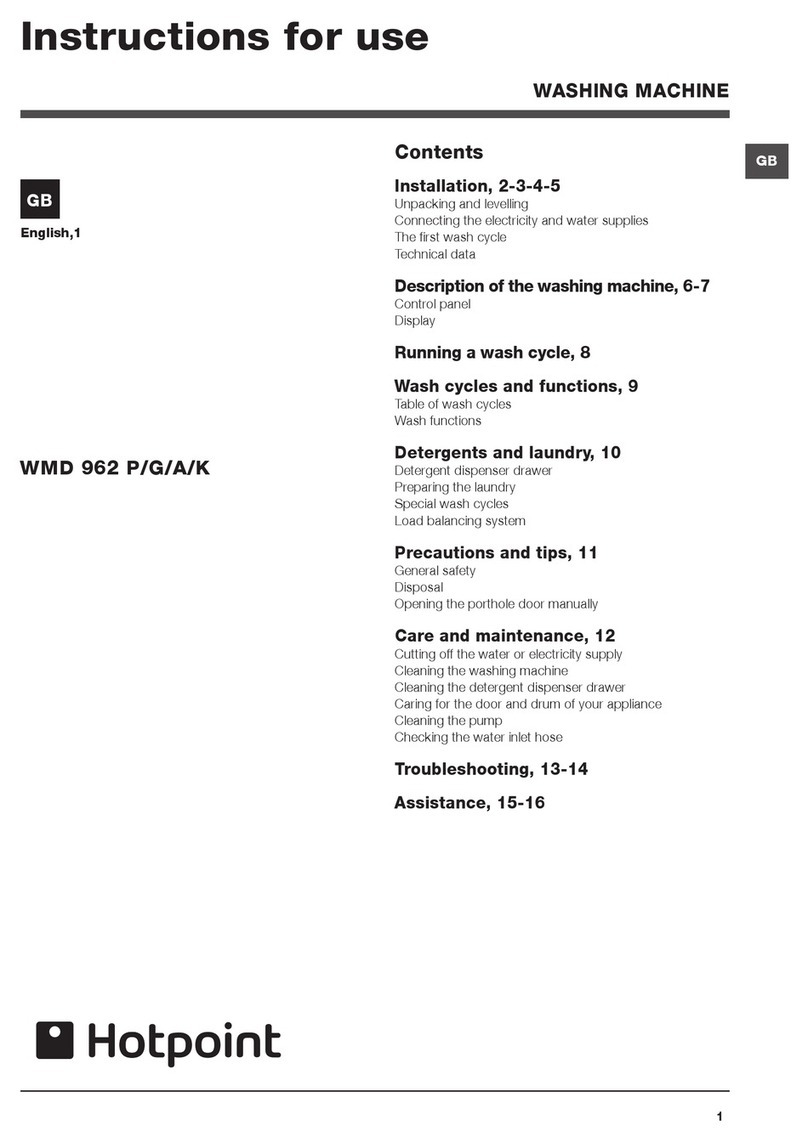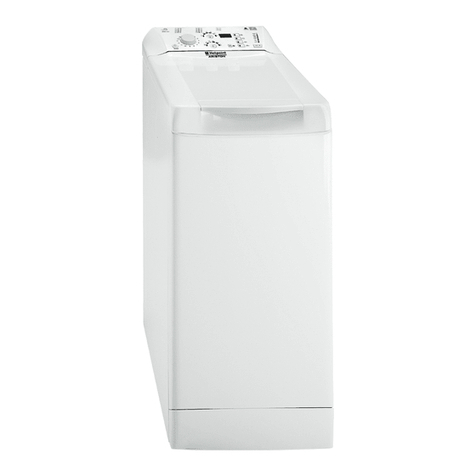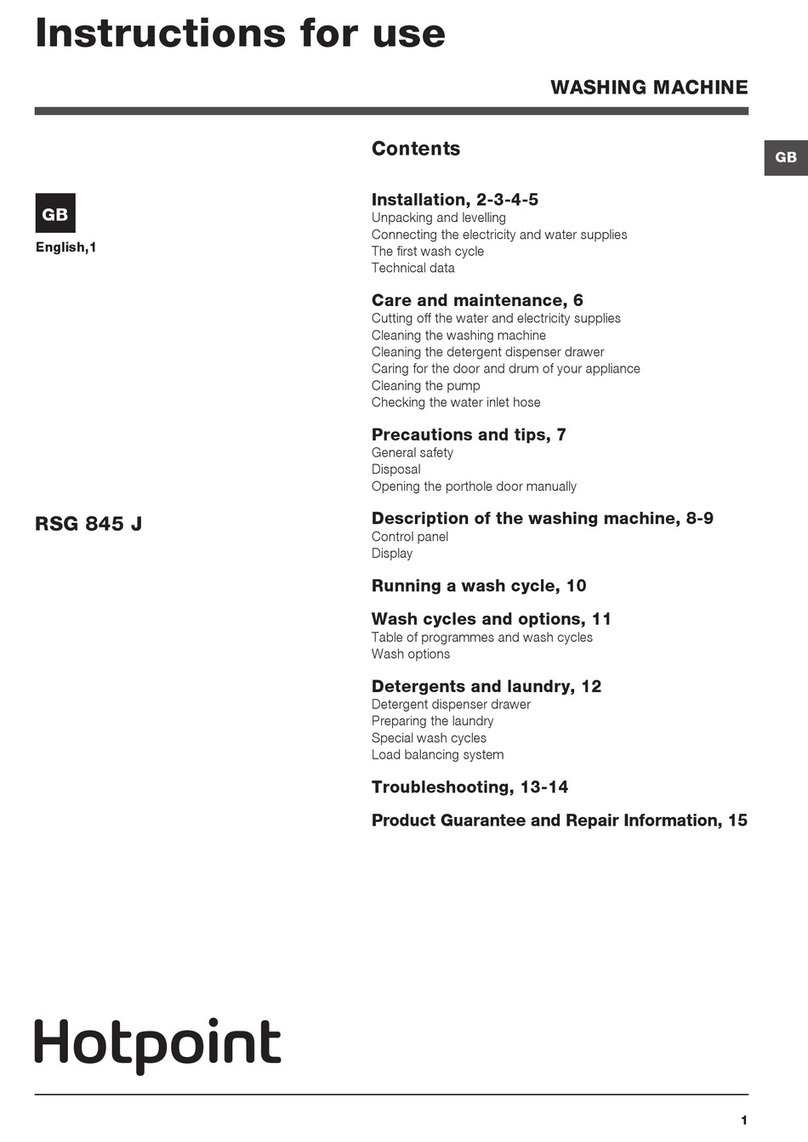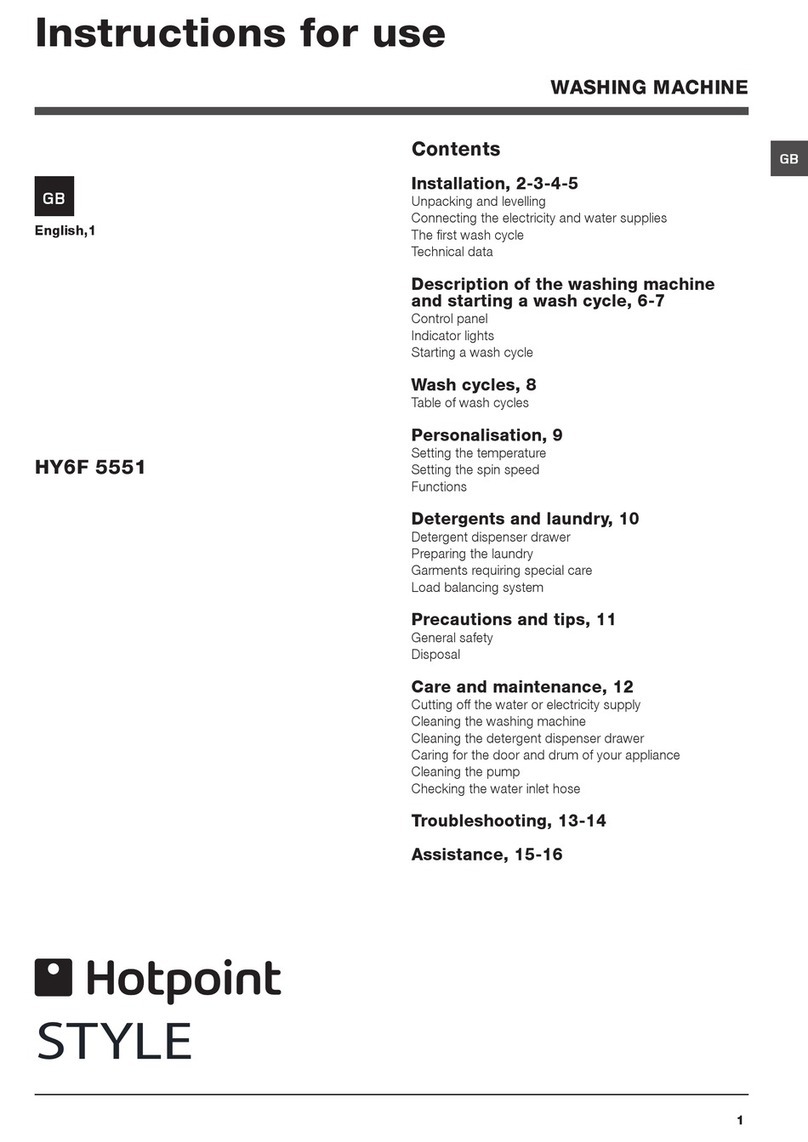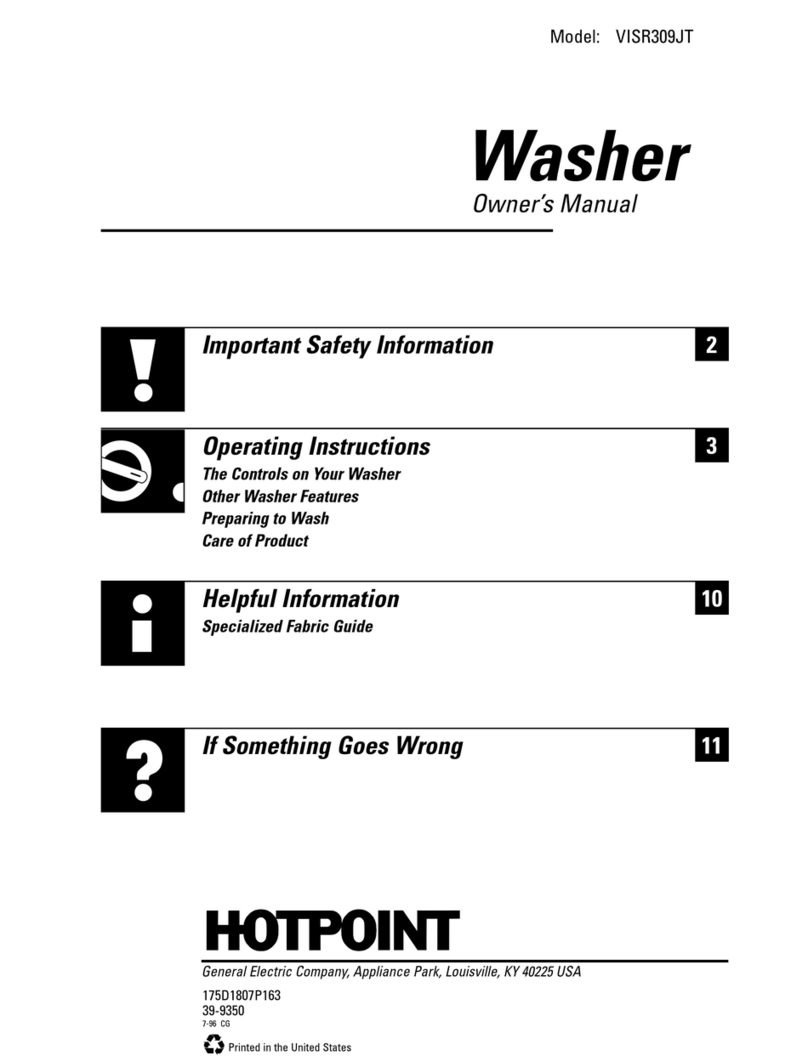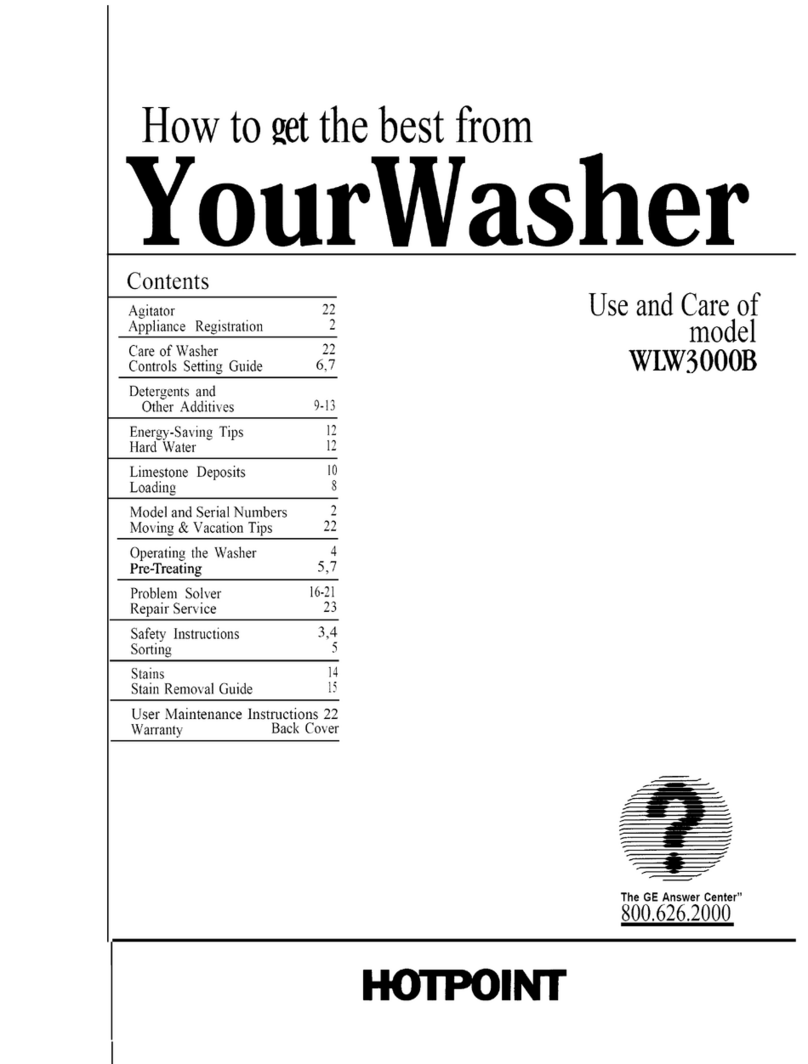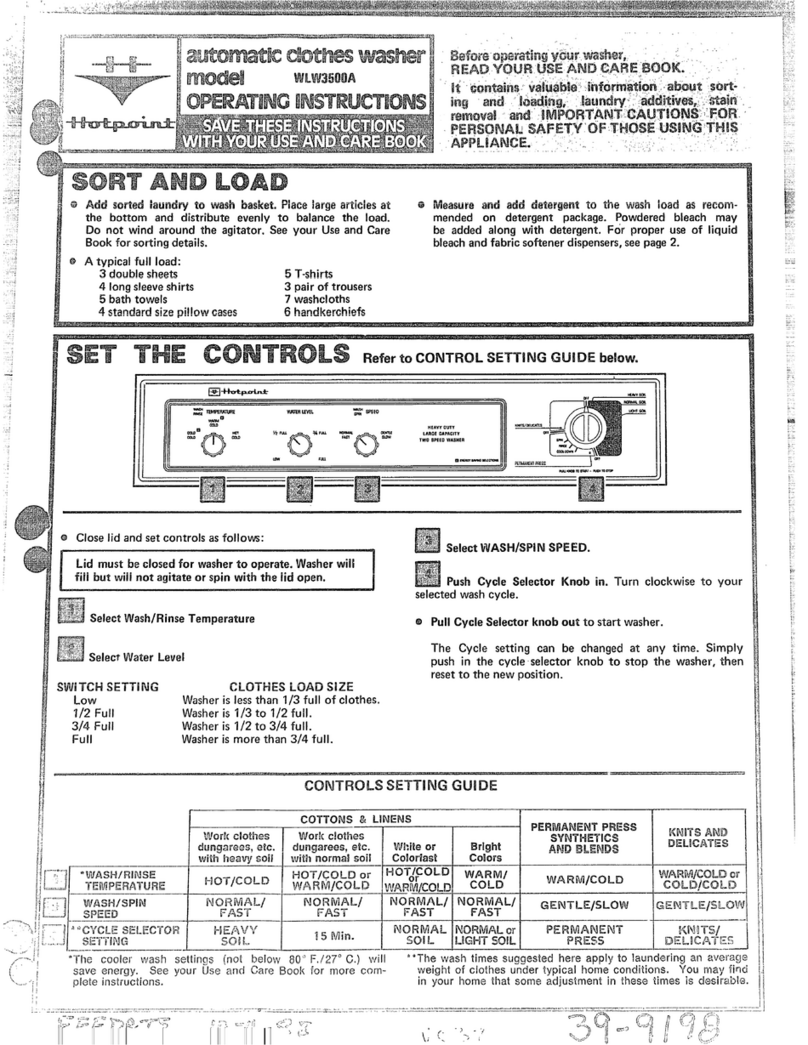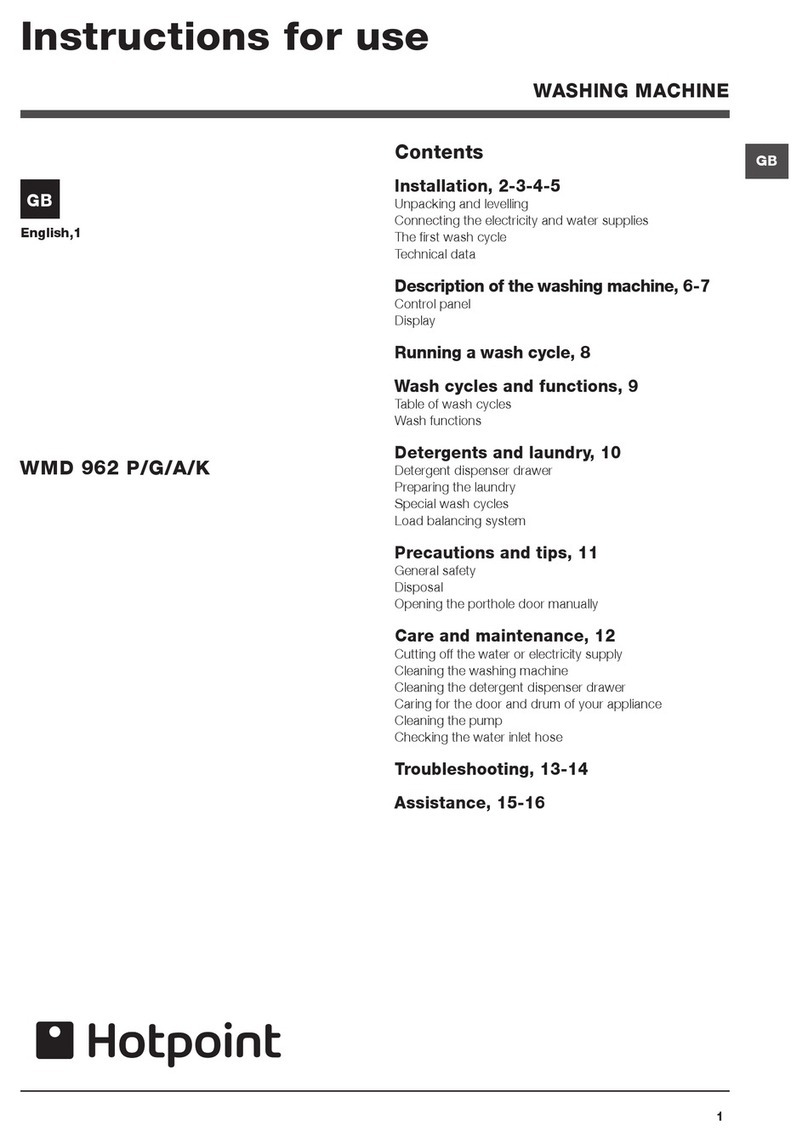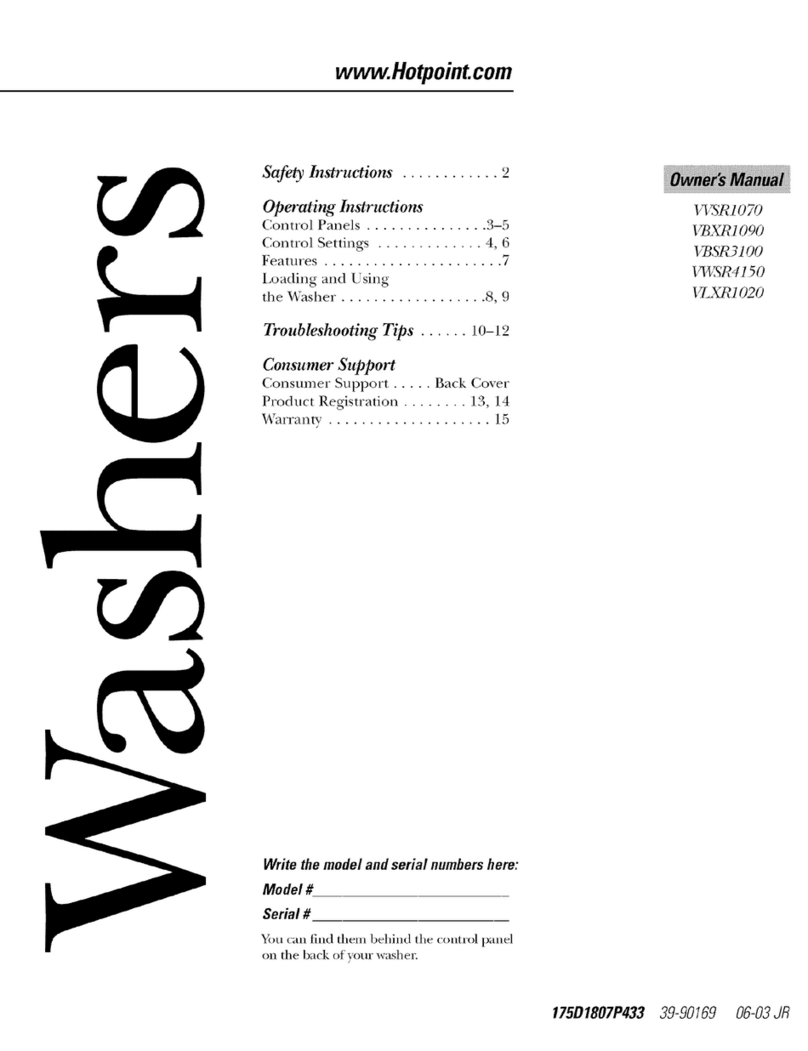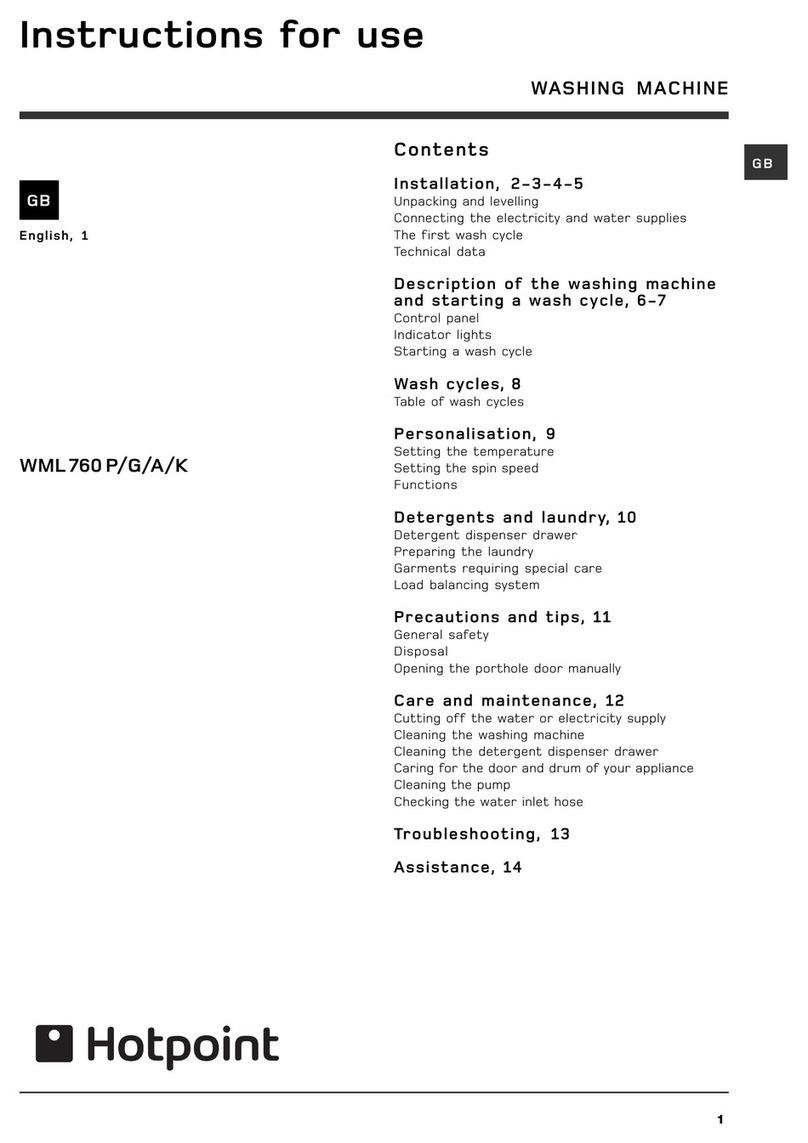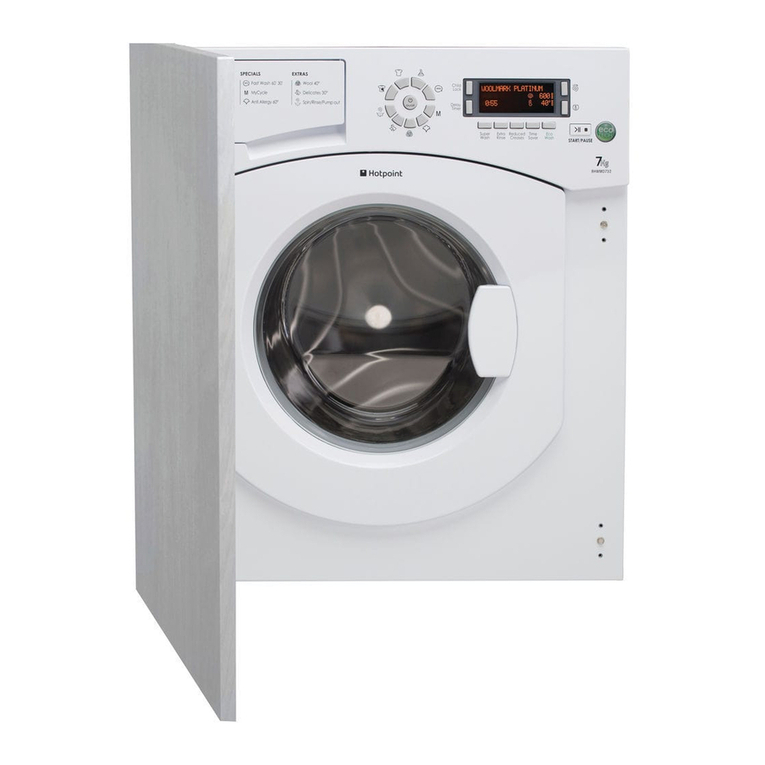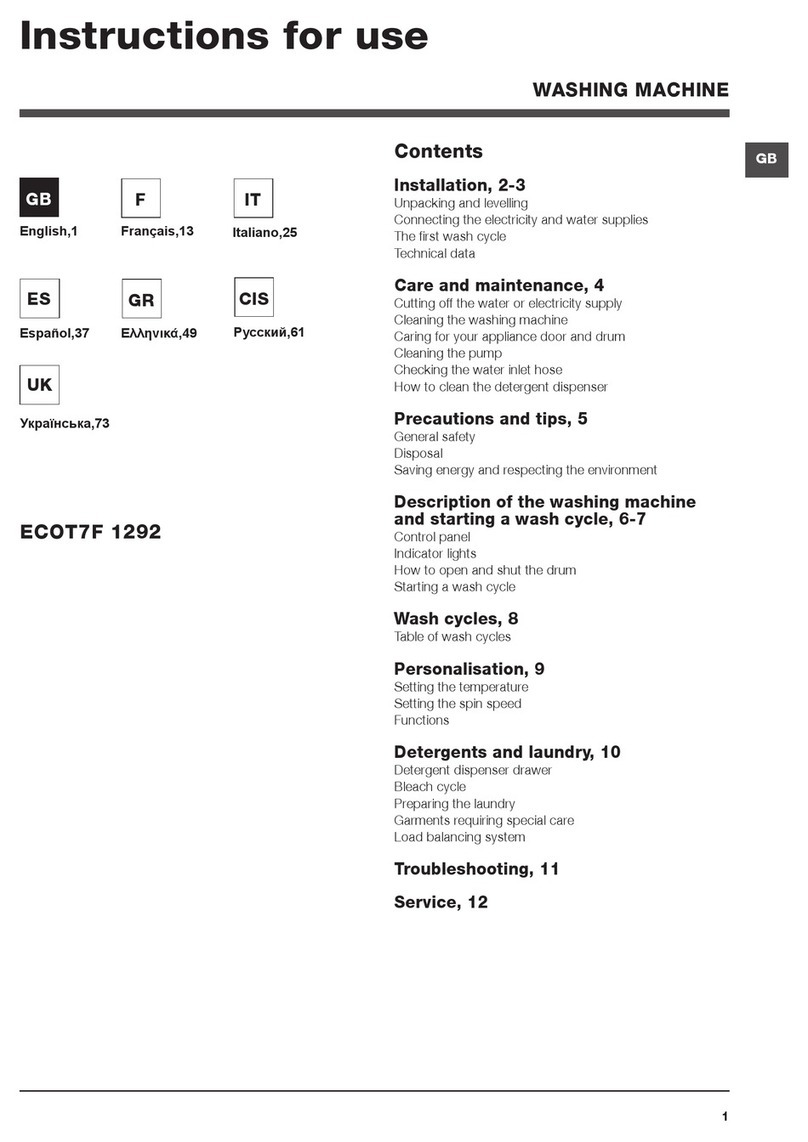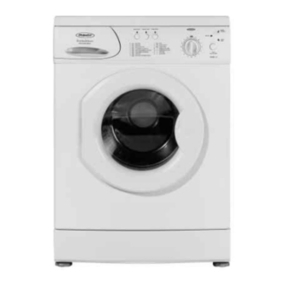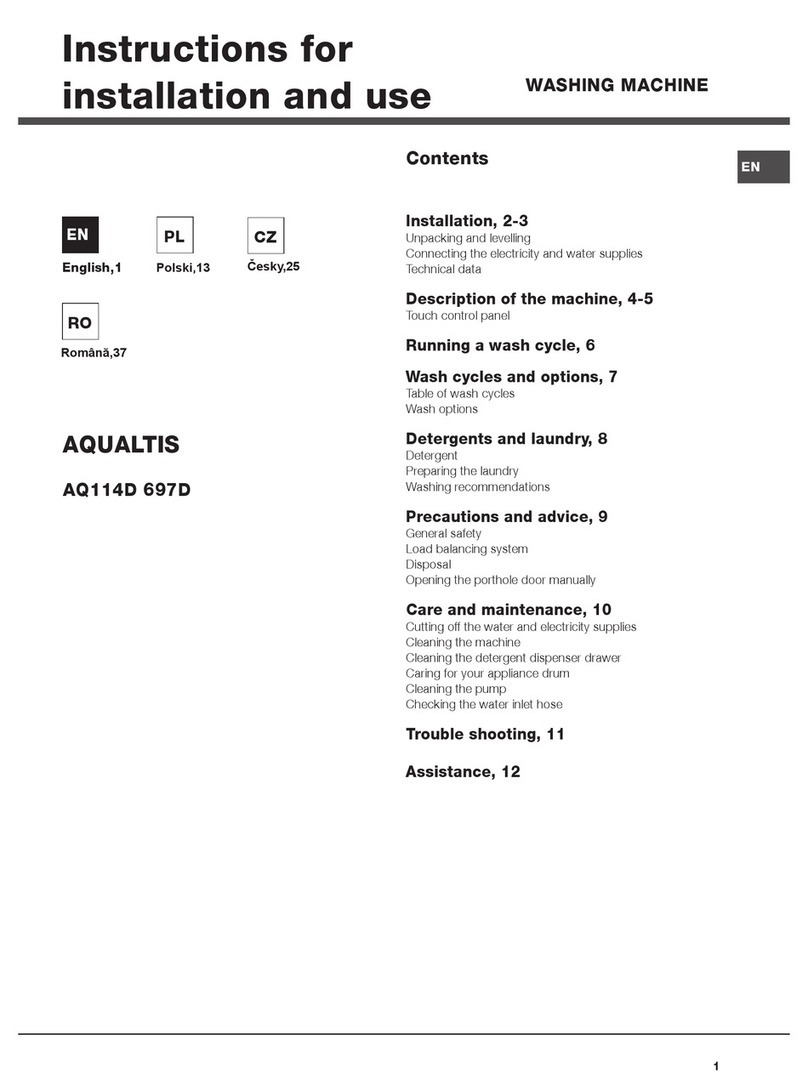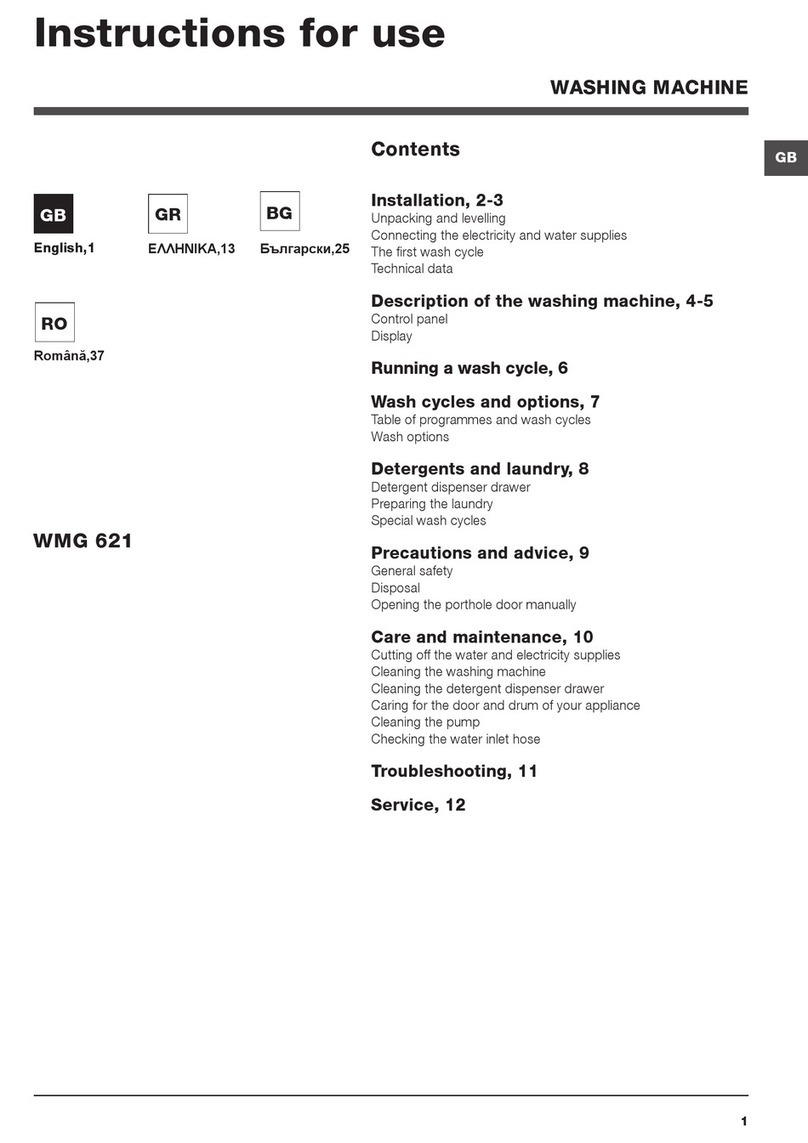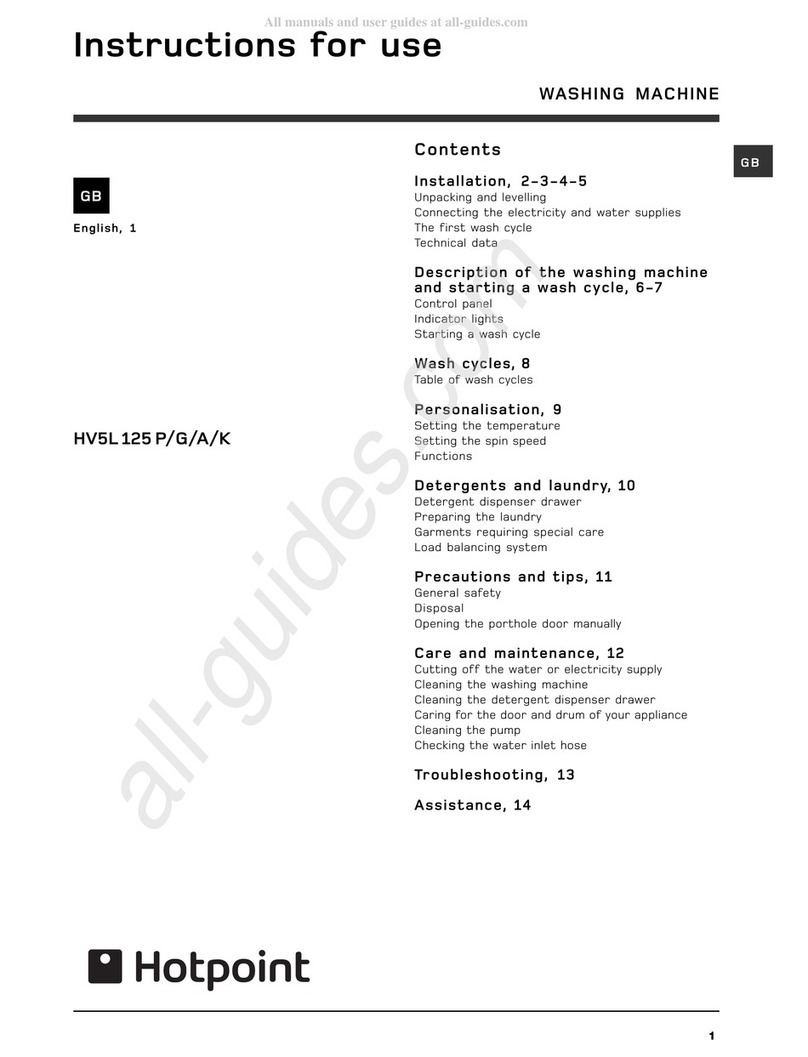IMPORTmT SAFETY INSTRUCTIONS
fire, electric shock, or injuryto
penomwhenustig yourapptiance,
follow basicprecaution,hcIutig
the folfowing:
~usethisappliance onlyfor its
intendedpurposeasdescribedin
thisUseandCare Book.
~This washermllstbeproperly
imtaUedandIomtedinaccordance
withtheInstallationInstructions
btiforeitisused.Ifyoudidnot
receiveanInstallationInstructions
sheetwithyourwasher,youcan
obtainonebycontactingtheservice
locationnearestyou.
—Properlygroundtoconform
withailgoverningcodesand
ordinances.Followdetailsin
InstallationInstructions.
–Installorstorewhereitwillnot
beex~osedtotemperaturesbelow
freezingorexposedtotheweather.
–Connecttoaproperly rated,
protectedandsizedpowersupply
circuittoavoidelectricaloverload.
—Connecttoadequateplumbing
anddrainfacilitiesasdescribedin
@ClosesupervisioIIisnecessary
ifthis appliance isusedbyor near
etiidren.Donotal[owcl~ildren
toplay;Elside,‘onorwithtilis
applianceoranydiscarded
applia~~ce.Disposeofdiscarded
appliancesandshippingor
packingmaterialsproperly.
Beforediscardingawasher,or
removingfromservice9remove
thewasherlid.
~Keepalllaundryaids(suchas
detergents,bleaches,fabricsofteners,
etc.)outofthereachofchildren,
prefemblyinalockedcabinet.Observe
allwarningson containerlabelsto
avoidpersonalinjury.
@Keep-thearea aroundand
underneathyourappliancesfree
fromtheaccumulationofcombustible
materials, suchaslint, paper, rags,
chemicals,etc.
sKeepthe flooraround your
appliancescleananddrytoreduce
thepossibilityofslipping.
@Tominimizethepossibility
ofelectricshock,unplugthis
appliancefromthepowersupply
beforeattemptinganymaintenance
orcleaning(excepttheremovaland
cleaningofthelintfilter).
NOTE:TurningtheCycleSelector
knobtoanOFFpositiondoesNOT
disconnecttheappliancefroi~]tl~e
powersupply.
@~~ ~~~~timper -withcoEltrolse
@Donotope;atethisappliance
ifitisdamaged,malfunctionii~g,
partiallydisassembled,oxhas
missingorbrokenparts,incl~~ding
adamagedcordorplug.
O]~ever~~imbo~~~~standonthe
washertop.
oDoil~twashfibe~,giassa~ticlesin
yourwasher. Skin irri{atio]lcov[ld
resultfrom tile remaini~lgparticlts
that maybe picked up by cioil~in~
dur-ingsubseq~~entwasl~eruse. “
i’<
r—————
--....—----—....f ‘k
